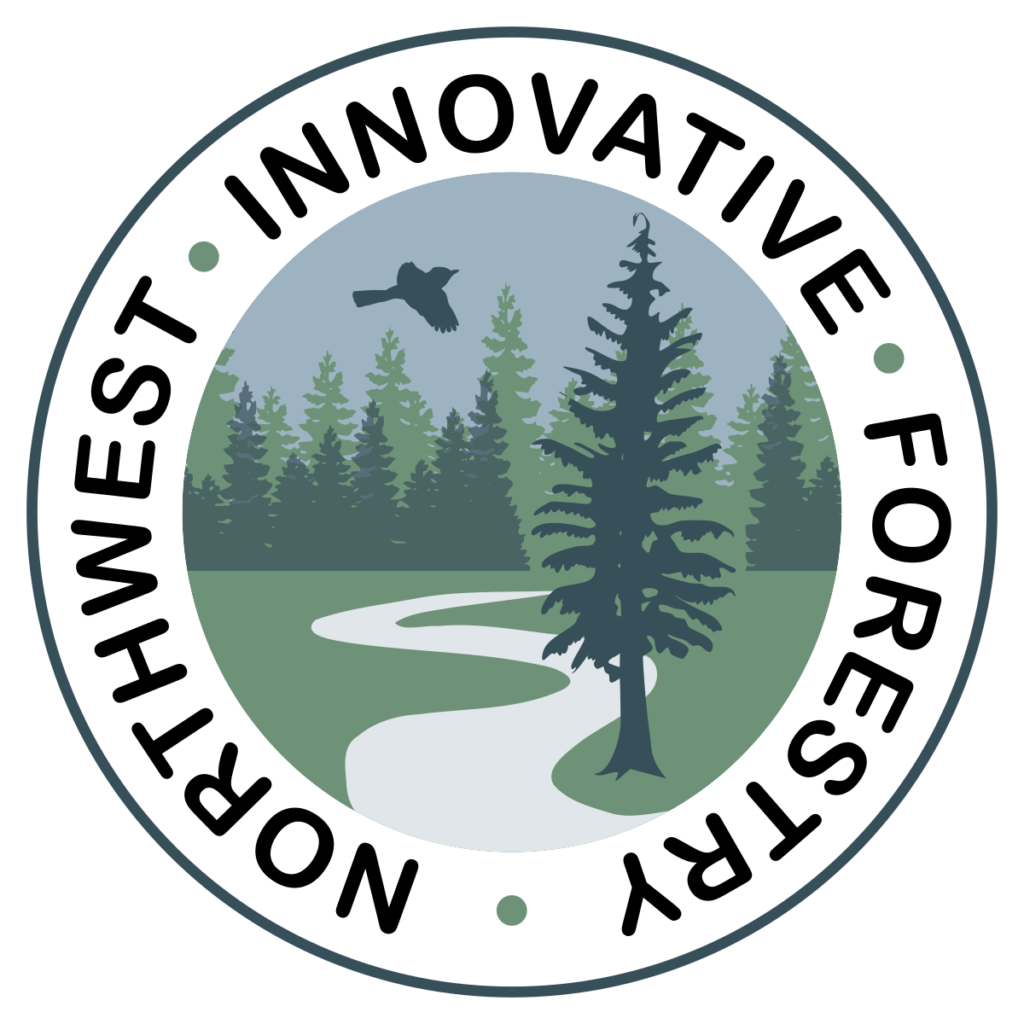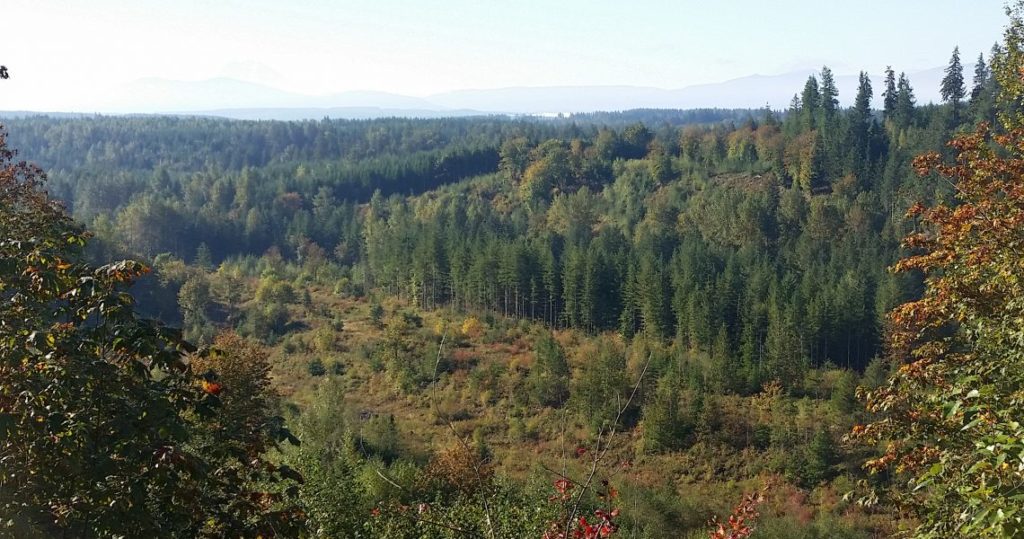Learning Drives Innovation in the Pacific Northwest
 Written by Peter Hayes
Written by Peter Hayes
Join me in imagining several linked scenes that will take place in the coming months. They’re so familiar to all of us – a circle of bluejeaned, booted, sun hatted or hard hatted, lively folks on the side of a road or trail, surrounded by vibrant forest, listening intently to one another – and a virtual, zoom-assisted circle of the same ilk, complete with tanned faces backed by shelves of books that you can’t quite make out. The combination of these scenes will take place in August and October thanks to this year’s learning opportunities made possible by the Northwest Innovative Forestry Summit (NIFS). Both forms of circles, virtual and welcomely real, will gather participants with valuable differences and important commonalities. Since it was launched in 2021, NIFS has creatively drawn together diverse and committed mixes of forest-connected Northwesterners to explore the vital role of practical innovation in forestry, past, present, and future. The Guild is one of five partner organizations driving NIFS’ success.

Photo of Stossel Creek area
This year’s mix of virtual and in-forest activities will explore the roles of experimentation in general, and our region’s experimental forests in particular, in supporting forest-related innovation. The differences among the participants will reflect NIFS’ ongoing success in building and using bridges. These bridges span across sectors of the forest community (public, Tribal, private, non-profit), generational (youngest students to wise elders), geographic (treating the Columbia River as integrator, not as divider), and gender, sexual orientation, cultural heritage, and more. Differences become assets thanks to the group members’ common bonds, of which, I anticipate two will stand out. All will bring shared interest and commitment to forests and mutually sustaining relationships with forests. I expect a second common bond will be that each participant will bring their own, unique involvement with a progression of activities:
- Step one: observing the stresses and challenges shaping local forests.
- Step two: framing questions and related learning.
- Step three: experimentation in hopes of answering the questions.
- Step four: innovatively applying the newly acquired knowledge to help address the challenges and relieve the stresses.
When step four loops back to connect with step one, another circle may be formed that leads to ongoing and familiar cycles of observation, questioning, investigation, and innovative application of new knowledge.
 These cycles have been a part of all forested lands for as long as humans have lived and depended on them. Regardless, there is always so much more we can learn from them. In addition to the learning opportunities offered by NIFS, excellent learning resources are all around us. In anticipation of the upcoming workshop focused on our region’s experimental forests, I lost myself in three relatively recent books. Each book is focused on one of the forests that we’ll have to postpone visiting with NIFS in 2023, due to current wildfires. But we can read Robbins’ A Place of Inquiry, A Place of Wonder and Luoma’s The Hidden Forest to carry us into the H.J. Andrews Forest’s remarkable history and contributions. The value of these books is enhanced when read in combination with Herring and Greene’s Forest of Time; A Century of Science at Wind River Experimental Forest. With Wind River being established in 1910 and the Andrews in 1948, the work of both reflect the ever-shifting nature of the questions that society judges to be most pressing. While all three books dig deeply into the stories specific forests, they also help us appreciate how their histories and research questions reflect the dramatic evolution of the relationships between people and forests in this region and the wider world.
These cycles have been a part of all forested lands for as long as humans have lived and depended on them. Regardless, there is always so much more we can learn from them. In addition to the learning opportunities offered by NIFS, excellent learning resources are all around us. In anticipation of the upcoming workshop focused on our region’s experimental forests, I lost myself in three relatively recent books. Each book is focused on one of the forests that we’ll have to postpone visiting with NIFS in 2023, due to current wildfires. But we can read Robbins’ A Place of Inquiry, A Place of Wonder and Luoma’s The Hidden Forest to carry us into the H.J. Andrews Forest’s remarkable history and contributions. The value of these books is enhanced when read in combination with Herring and Greene’s Forest of Time; A Century of Science at Wind River Experimental Forest. With Wind River being established in 1910 and the Andrews in 1948, the work of both reflect the ever-shifting nature of the questions that society judges to be most pressing. While all three books dig deeply into the stories specific forests, they also help us appreciate how their histories and research questions reflect the dramatic evolution of the relationships between people and forests in this region and the wider world.
Time will tell where explorations of the upcoming NIFS-sponsored webinar and field workshop at Stossel Creek in Washington will lead, but I am confident that all participants will value the ways that our shared inquiry, learning, and connection-building leave us inspired and better equipped to meet the challenges ahead.
